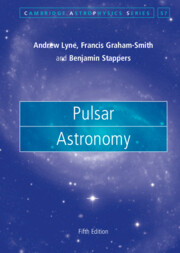Book contents
- Frontmatter
- Contents
- Preface
- Part I Discoveries and Techniques
- Part II Observed Physical Characteristics
- Part III Neutron Star Physics
- Part IV Environments and the Interstellar Medium
- 18 Supernovae and Their Remnants: Pulsar Wind Nebulae
- 19 Interstellar Scintillation and Scattering
- 20 The Interstellar Magnetic Field
- 21 Prospects
- References
- Index
18 - Supernovae and Their Remnants: Pulsar Wind Nebulae
from Part IV - Environments and the Interstellar Medium
Published online by Cambridge University Press: 21 July 2022
- Frontmatter
- Contents
- Preface
- Part I Discoveries and Techniques
- Part II Observed Physical Characteristics
- Part III Neutron Star Physics
- Part IV Environments and the Interstellar Medium
- 18 Supernovae and Their Remnants: Pulsar Wind Nebulae
- 19 Interstellar Scintillation and Scattering
- 20 The Interstellar Magnetic Field
- 21 Prospects
- References
- Index
Summary
The remnant of a supernova explosion may be observed for some thousands of years in close relation to a pulsar. Radiation from a pulsar may excite radiation from the interstellar medium, causing a pulsar wind nebula, which may be asymmetric due to velocity of the pulsar
Keywords
- Type
- Chapter
- Information
- Pulsar Astronomy , pp. 299 - 321Publisher: Cambridge University PressPrint publication year: 2022

